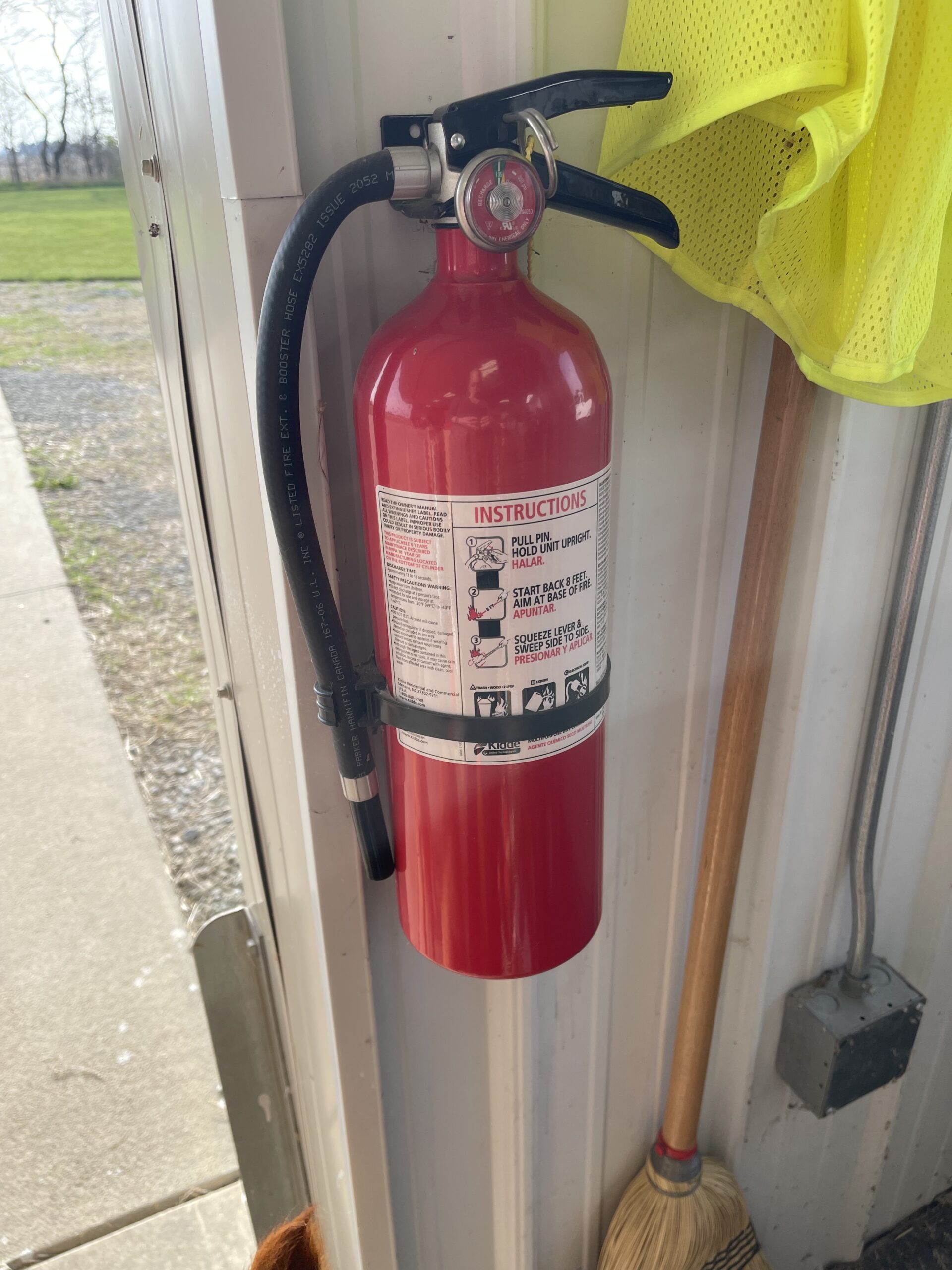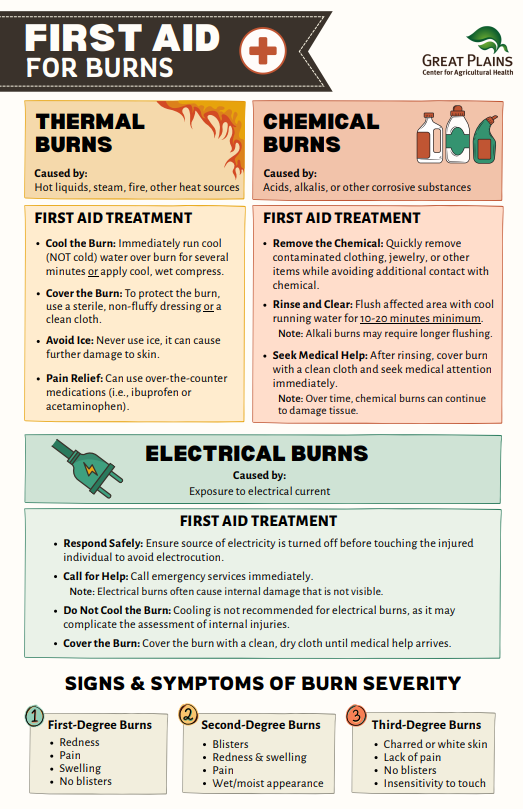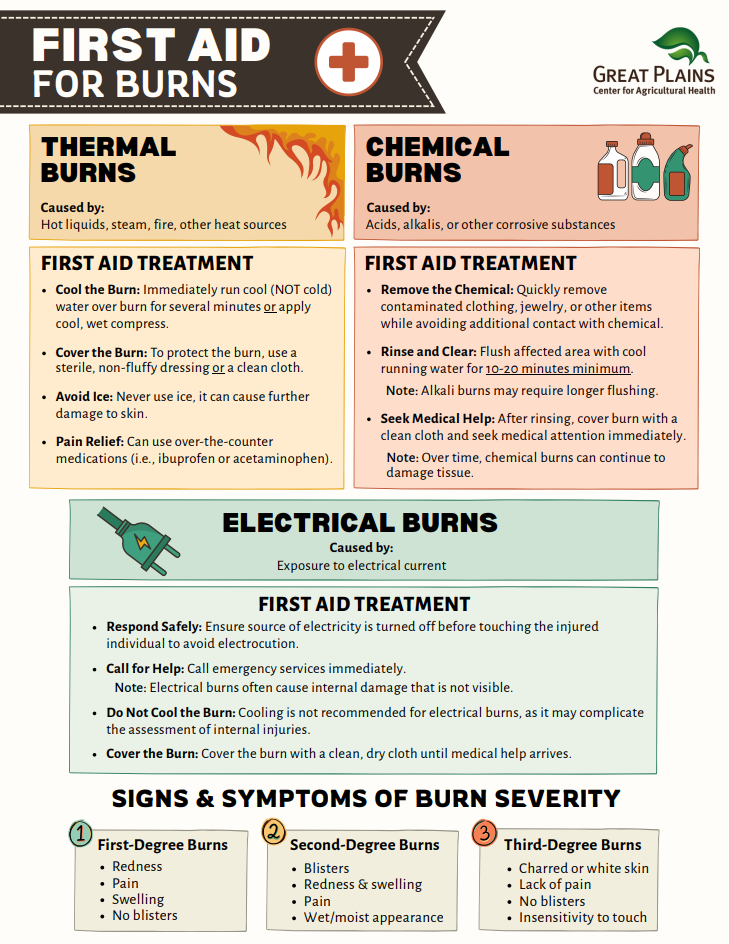FarmSafe Podcast
S4E11 | Farm Burn Basics: First Aid for the Field
Published April 23, 2025. Hosted by Libby Ritchie.
Episode Summary
This episode discusses fire safety and first aid procedures, particularly relevant to farm settings. A key takeaway is the importance of prevention in avoiding injuries and fires. Our expert, Pittsville Fire Chief, Jerry Minor, emphasizes a proactive approach, encompassing proper equipment, training, and building awareness for employees and the entire family. The discussion highlights the importance of proactive safety measures in preventing and responding to fires and injuries on farms.
Episode Resources
First Aid for Burns, GPCAH [Poster, 11×17]
First Aid for Burns, GPCAH [Handout, 8.5×11]
First Aid/CPR/AED Courses, American Red Cross, Webpage
First Aid Training Resources
To obtain first aid training, check local hospitals, schools, emergency medical services (EMS), and similar resources for upcoming first aid classes. Sign up for a first aid or first responder class or organize a class for workers or local agricultural organizations. Several state and national organizations, including those listed below, may have courses or trainers available in your area:
- American Red Cross: Input your zip code on the website to find a local Red Cross office.
- National Safety Council: Choose the type of class you wish to take and identify your area to locate an instructor.
*Many institutions also offer online training courses.
EPISODE NOTE: Disposable fire extinguishers should be replaced every 10 years.



